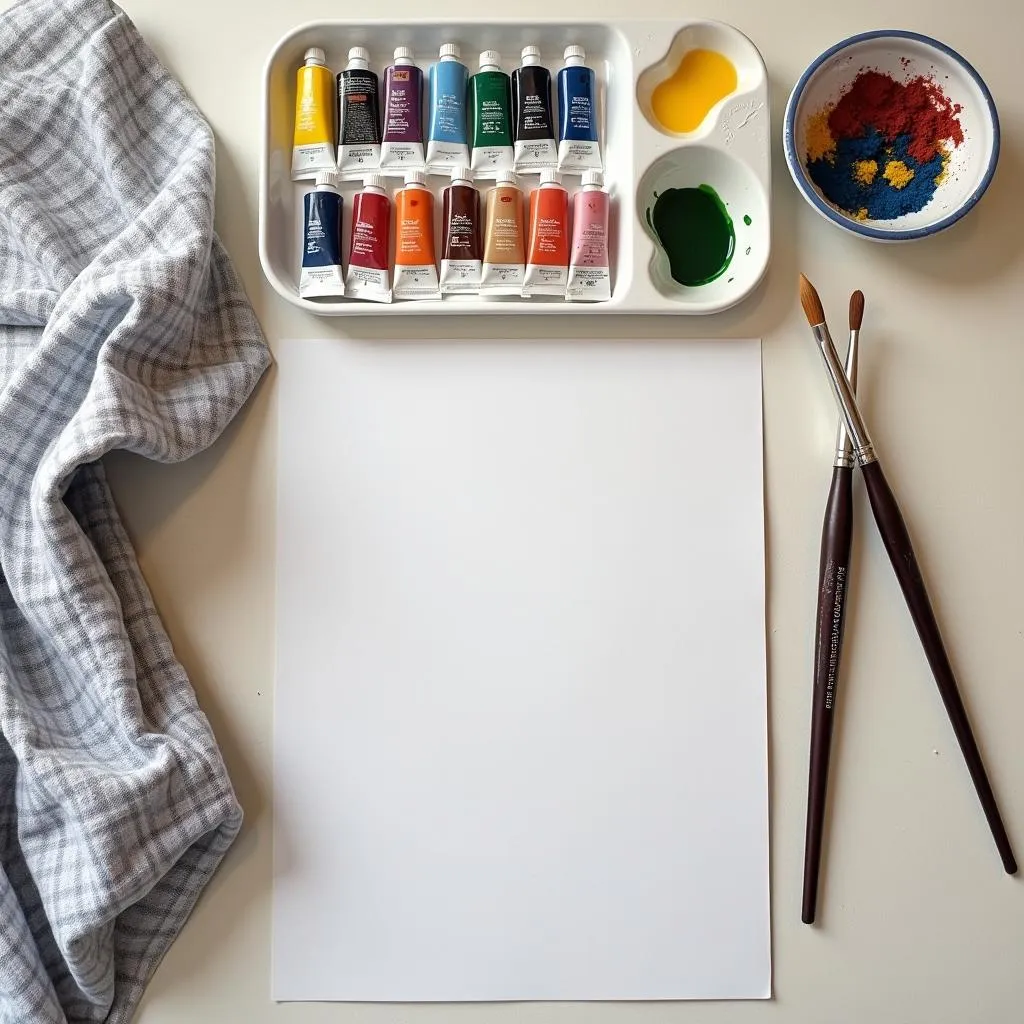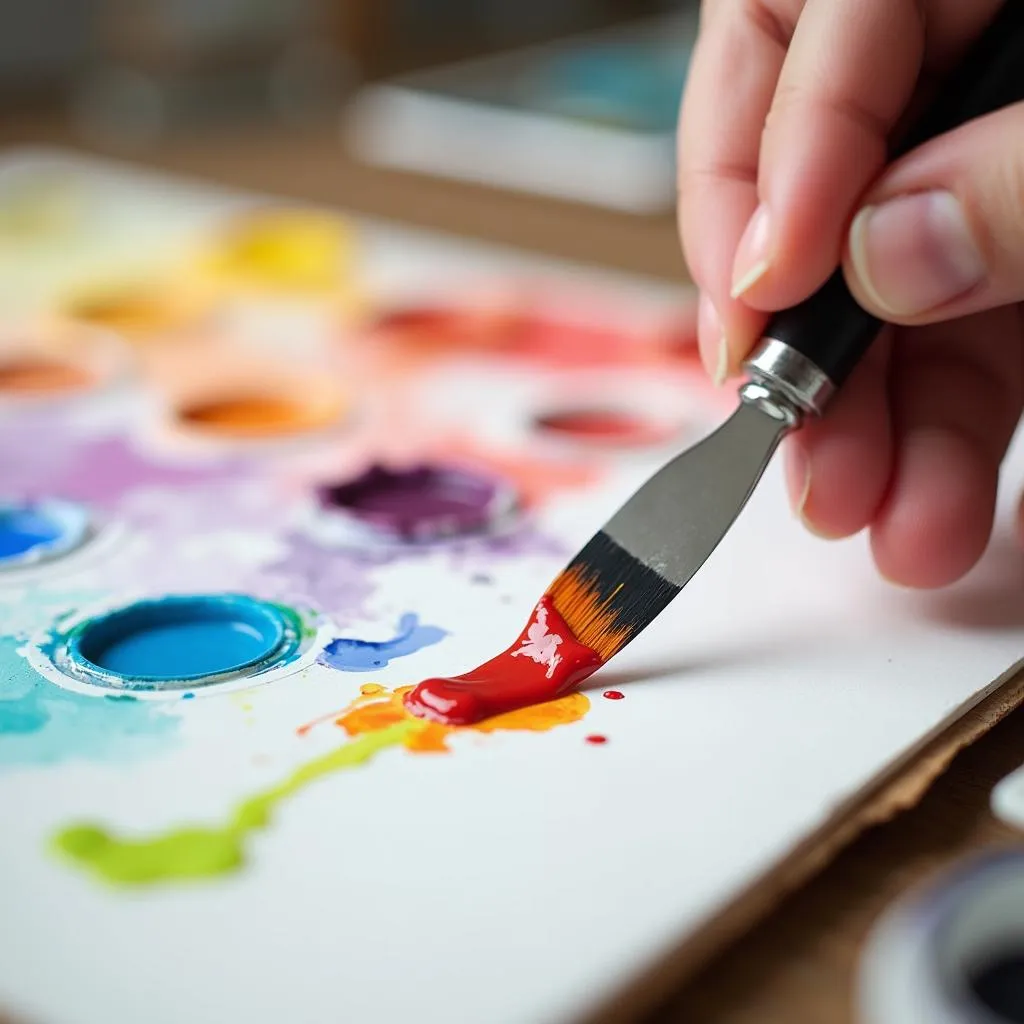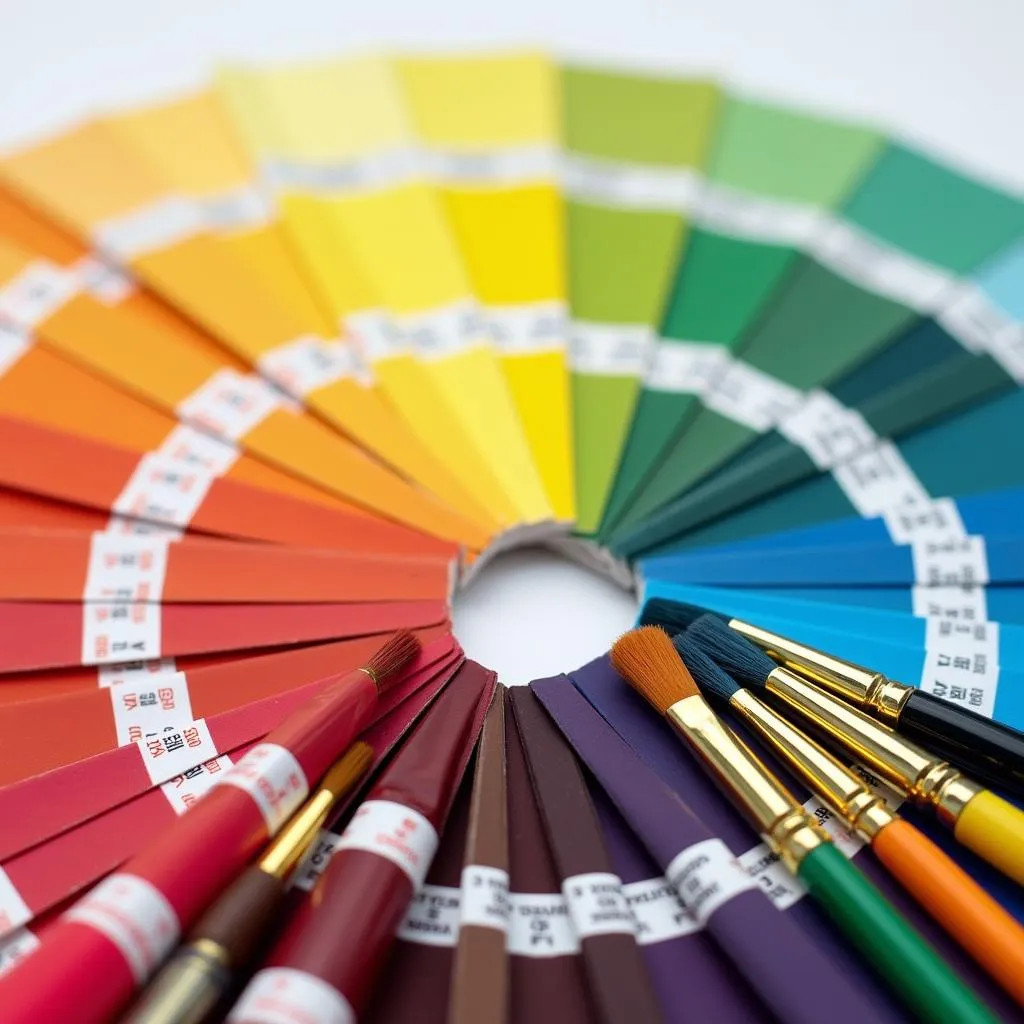Mixing paint colors is a fundamental skill for anyone who wants to unlock a world of creative possibilities in their painting projects. Whether you’re a seasoned artist or a DIY enthusiast, understanding the basics of color mixing can save you trips to the paint store and allow you to achieve the perfect hue for any surface.
 Essential supplies for mixing paint colors
Essential supplies for mixing paint colors
Understanding the Color Wheel
The first step to mastering paint mixing is to familiarize yourself with the color wheel. This essential tool visually represents the relationships between different colors. The color wheel consists of:
- Primary Colors: Red, Yellow, and Blue. These colors cannot be created by mixing other colors and serve as the foundation for all other hues.
- Secondary Colors: Orange, Green, and Violet. These colors are created by mixing two primary colors.
- Tertiary Colors: Yellow-orange, red-orange, red-violet, blue-violet, blue-green, and yellow-green. These are created by mixing a primary color with a neighboring secondary color.
Understanding the relationships between these colors is crucial for successful paint mixing.
Essential Paint Mixing Tips
Before you dive into mixing paints, here are some key tips to keep in mind:
- Start with small amounts: It’s always easier to add more paint than to try to correct a mixture that’s too dark or intense.
- Mix thoroughly: Make sure the colors are fully blended for a consistent result.
- Test your color: Always test your mixed color on a small, inconspicuous area before applying it to your final surface.
- Keep track of your ratios: If you create a custom color you love, note down the proportions of each color used so you can recreate it in the future.
 Artist mixing paint colors on a palette
Artist mixing paint colors on a palette
Mixing Basic Colors
Here’s how to mix some common colors using the primary colors:
- Orange: Mix red and yellow in equal parts.
- Green: Mix blue and yellow in equal parts.
- Violet: Mix blue and red in equal parts.
Creating Tints, Shades, and Tones
- Tints: To lighten a color, add white. The more white you add, the lighter the tint will become.
- Shades: To darken a color, add black. Black can be a powerful pigment, so add it gradually.
- Tones: To create a more muted or subtle color, add gray. Gray can be created by mixing black and white.
Advanced Color Mixing Techniques
Once you’re comfortable with the basics, you can experiment with more advanced techniques, such as:
- Color Layering: This involves applying thin layers of different colors over each other to create depth and complexity.
- Glazing: Similar to layering, glazing involves using transparent layers of color to modify the underlying hues.
- Scumbling: This technique involves using a dry brush to apply a thin layer of paint over a dry layer, resulting in a textured and blended effect.
Mastering Color Harmony
Color harmony refers to the pleasing arrangement of colors in a composition. Understanding basic color theory can help you create visually appealing and balanced color schemes. Here are a few popular color harmonies to consider:
- Monochromatic: Using different tints, shades, and tones of a single color.
- Complementary: Using colors opposite each other on the color wheel.
- Analogous: Using colors that are adjacent to each other on the color wheel.
 A color wheel depicting primary, secondary, and tertiary colors
A color wheel depicting primary, secondary, and tertiary colors
FAQs about Mixing Paint Colors
1. Can I mix oil-based and water-based paints?
No, it’s not recommended to mix oil-based and water-based paints as they have different chemical compositions and won’t blend properly.
2. What happens if I mix all the primary colors?
Mixing all the primary colors will result in a muddy brown color.
3. How do I achieve a specific shade of gray?
You can achieve a variety of grays by mixing black and white in different proportions. Adding a touch of another color, such as blue or brown, can also create a unique gray shade.
“Mixing paint is like cooking – you start with basic ingredients and experiment with different combinations to create something delicious.” – Sarah Jones, Color Specialist
Conclusion
Mixing paint colors opens up a world of possibilities for your painting projects. By understanding the color wheel, mastering basic mixing techniques, and exploring advanced methods, you can create a vast range of colors and achieve the perfect hue for any project. Remember to experiment, practice, and have fun exploring the endless possibilities of color!
If you need further assistance with your paint mixing journey or are looking for expert advice on choosing the perfect colors for your space, please don’t hesitate to contact us. Call us at 0373298888, email us at [email protected] or visit our studio at 86 Cầu Giấy, Hà Nội. Our team of color specialists is available 24/7 to help you create the space of your dreams.
Learn more about how to mix acrylic colors for painting and explore our comprehensive guide on how to mix colors for painting. Discover the captivating world of vintage colors and find out the answer to the intriguing question: is black the combination of all colors?. If you’re curious about the components of blue paint, check out our article on what 2 colors make blue paint.

